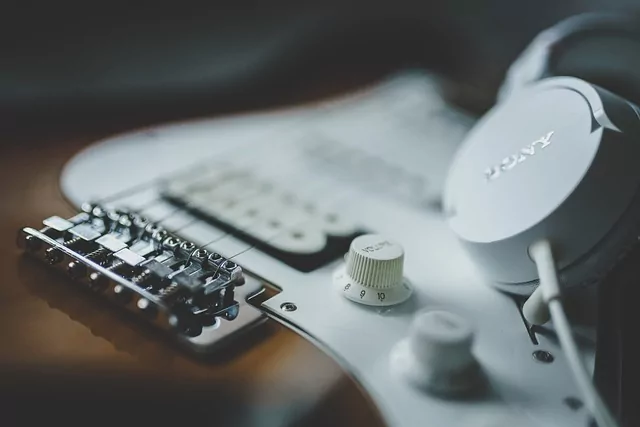Contents
Learning the electric guitar entails comparable processes to learning the acoustic guitar, however, there are several nuances exclusive to the electric guitar due to its unique qualities.
To learn the electric guitar effectively, follow this advice:
Get the Correct Equipment:
– Electric Guitar: Opt for a guitar that fits your own tastes and playing style. Think of things like pickups, neck profiles, and body shapes.
– Amplifier: In order to hear the sound of your electric guitar, you will need an amplifier. Begin with a modest practice amp that is ideal for use at home.
– Cables and Extra Strings: Invest in a high-quality cable, a guitar strap, picks, and a tuner.
Learn the fundamentals of playing the guitar
such as how to hold the instrument, where to place your hands, and how to use a guitar pick.
– Recognize the parts of an electric guitar, such as the pickups, tone and volume controls, and (if applicable) the whammy bar.
Learn to Play the Guitar
Start with Simple Scales and Chords
– Gain knowledge of power chords and open chords (C, G, D, A, E, Am). Power chords are frequently utilized when playing rock and electric guitar.
– Get familiar with fundamental scales, like as the pentatonic scale, which is frequently utilized for soloing in rock and blues music.
Explore Different Styles
The electric guitar is adaptable and may be played in a variety of musical genres, including rock, blues, jazz, metal, and more. Find your preferred genre by exploring others.
Understanding Amplifiers
– Learn about your amplifier’s many controls, including gain, volume, tone, and effects (if any).
– Try out various amp settings to learn how they alter the sound of your guitar.
Experiment with Effects
Effects pedals are frequently used by electric guitarists to modify their sound. Start off with fundamental effects like overdrive, delay, reverb, and distortion.
Learn to Read Tabs and Chord Charts
Tablature, sometimes known as tabs, is a common notation method for guitar music. To perform songs and riffs, learn to read tabs and chord charts.
Practice Riffs and Solos
The classic riffs and solos of the electric guitar are well-known. Start with straightforward riffs and progress to more intricate solos with time.
Ear Training and Playing by Ear
Develop your ear’s ability to distinguish various chords and notes. This will enable you to learn songs by ear and compose your own music.
Use Backing Tracks
To improve your time and rhythm, play along with drum loops or background recordings. This is extremely helpful for practicing soloing.
Study Guitar Techniques
Techniques on the electric guitar include bending, vibrato, sliding, tapping, and more. To learn and put these techniques into practice, watch tutorials and videos.
Practice with a Metronome
Develop your sense of timing and accuracy by using a metronome. For collaborating with other musicians, this is essential.
Learn Guitar Maintenance
String changes, intonation adjustments, and cleaning are all necessary maintenance procedures for electric guitars. To maintain the condition of your guitar, learn some fundamental maintenance techniques.
Look for Resources and Advice
Utilize online classes, video tutorials, and courses designed specifically for learning the electric guitar. Think about enrolling in electric guitar lessons from a teacher of the guitar.
Play Along with Songs
To put everything you’ve learned into practice musically, play along with your favorite tunes.
Image by René Bittner from Pixabay

